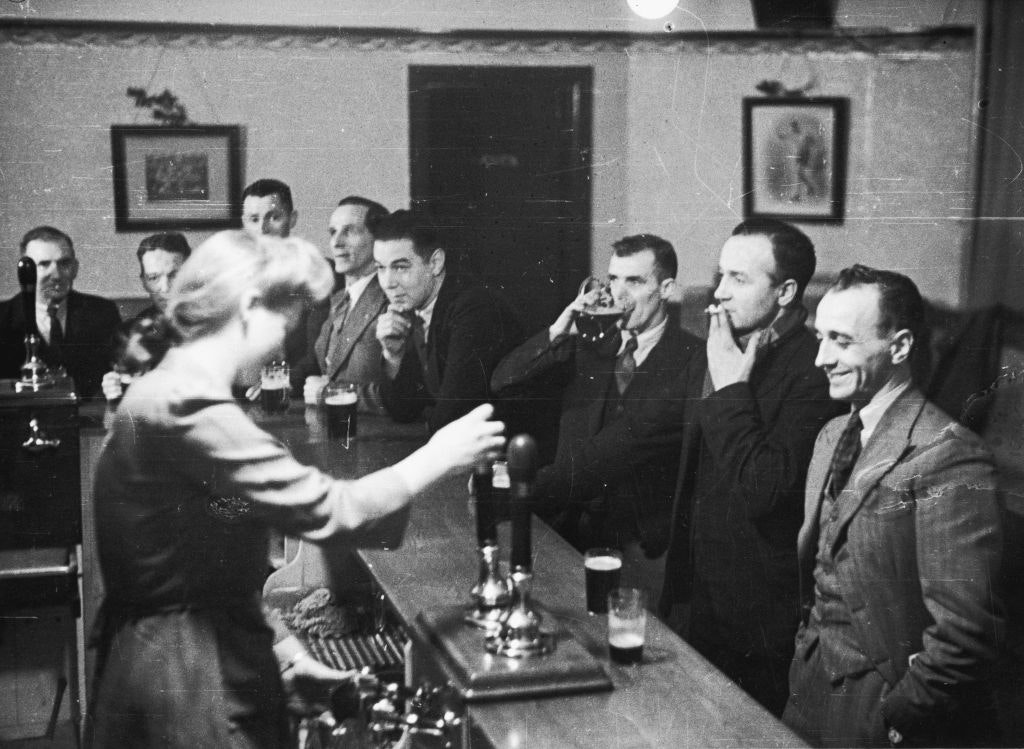Seeing France through the ruin of her past
Nantes cathedral did not burn alone
“Not again …” must have been the feeling so many of us had on hearing the news once more. That Saturday morning videos and pictures of a cathedral on fire kept trickling down my phone screen. Nantes’ cathedral, Saint-Pierre-et-Saint-Paul, was on fire. The flames behind the rosace were reminiscent of what happened in Notre-Dame a year ago, reminding me, too, of that fire which almost destroyed my French parish — Saint-Louis in Fontainebleau in 2016. In that inferno, a mannerist statue of the Virgin Mary, Notre-Dame de Franchard, miraculously preserved as it had been hidden in a heap of manure during the French Revolution, disappeared in the flames. Nantes’ famous cathedral organ fell to the flames, after having survived the French revolution, bombings in June 1944 and a previous fire in 1972. It was considered a masterpiece of execution and restoration. Hippolyte Flandrin’s 1833 painting, Saint Clair healing the blind, was also destroyed. That was what we formally lost.
Hastily criminal responsibility was considered. A viral Facebook post — since deleted — attributed the fire to the Islamic terrorist group Forsane Al Izza. A few hours later on the day of the blaze, a Rwandese volunteer, in charge of closing the cathedral on the eve of the fire, was held under custody and investigated by the police. CNews interviewed a random — black — passerby, assuming he was the suspect, and awkwardly put an end to the live broadcasting when realising the mistake. By the time the man was set free on Sunday, rabid racist comments had already been poured down Facebook and Twitter — ignoring or not caring that the volunteer was a catholic himself.
Misinformation runs fast. Some witnesses heard bells chiming in the night; one stated he heard discordant organ sounds before the fire, corroborating the plausibility of arson.
More measured commentators underlined the plausibility of an accident. The three fire starts were located along the electric wiring. The sacristain Jean-Yves Magnier noted that many problems had already happened and that ‘there are some things to find out’ in that direction.
Albeit nauseating when soaked in racism, bitter vindictiveness and false accusations, an understandable feeling of doom and fear surrounds fires in French cathedrals. There is a sense of shared grief when a cathedral is burning; and not only when it is as famous as Notre-Dame-de-Paris. A monument devoured by fire forces us to face the fragility of the very things we build to overcome our essential impermanence.
A non-believer can understand the dizziness in front of the irremediable losses in such a fire as Notre-Dame’s or Nantes’ Saint-Pierre-et-Saint-Paul. The painting by Flandrin is lost forever. So is the organ, and with it a fascinating scene of the French revolution. During the Revolution, the cathedral was turned into a Temple of Reason, the organ was about to be pulled down when the organist Denis Joubert stepped in and played La Marseillaise, thus saving the organ by showing it could be useful during the fêtes révolutionnaires.
After the 1905 laïcité laws on the separation of Church and State, churches oscillated between being seen as national monuments or as local places of worship. Just as for Notre-Dame, the French government will be funding the repair bill. What exactly is the State’s responsibility in the preservation of historic religious buildings? As of 1905, no religious organisation can directly benefit from any financial help at a national level. At a local level, however, the communes must provide the necessary budget to maintain the buildings’ security and integrity: ‘The commune is not required to maintain religious buildings. However, safety being the communes’ responsibility, it is their duty to get the necessary works done to ensure a proper conservation of the edifices.’
Didier Rykner, the noted art historian and journalist, prudently says nothing of arson, but deplores the fact that after Notre-Dame, nothing has been done to preserve the artistic wealth of French churches. There was an electric table right next to the Flandrin painting, and no alarm system in place. As Rykner notes, ‘the state has given up one of its regal missions: the maintenance and renovation of the French national heritage.’
Bruno Le Maire, Minister of the Economy, declared: ‘It is an obligation for the State because it is its property, it is an obligation because it is our culture, so we will answer the call.’ One would wonder what is meant by “our” culture? To what extent is the Christian culture a shared reference in secular France? According to the last statistics on the Ministry of the Interior’s website, in 2018, there were 496 antisemitic acts and 100 anti-muslim acts. Over the same period, 1063 anti-christian acts were perpetrated, a number the Observatoire de la Christianophobie thinks an underestimate.
Symbols of Christianity are a wonderful target to anyone who is unhappy with the Western world as it is. To some feminists, Christianity means patriarchy. To some LGBTQ activists, it means homophobia. To some muslims, it means idolatry. In 2020, catholicism represents a past that needs to be wiped out. Right after the fire, the Ligue de Défense Noire Africaine (Black-African Defence League) tweeted: ‘The Cathedral payed for by Nantes’ slave traders with slave-trade and slavery money? What did the Catholic Church do to prevent our ancestors’ dehumanisation? Not a single sermon, nor a Papal Bull for the Niggers!’ This tweet is obviously forgetful of the Church’s doctrine on human dignity, of Paul III ’s ball Verits ipsa in 1537 and of Leon XIII’s series of encyclicals in the 1890s.
France is a country where one cannot take the train, order wine or buy cheese without pronouncing names of saints
The pulling down and smashing of statues linked to the Western world’s christian identity has shed a new light on the fate of Christian art and architecture. On the 4th of May 2019, an alarming montage of eleven French churches on fire went viral on social media. Although it actually piled up accidental fires with acts of arson — even adding a church located in Canada, it tells as much about the feelings about a forsaken part of French history as it does about how easily that past can be burnt away.
Two days after the Nantes fire, the Christ of the Isle of Arz Calvary was found in pieces. Three days later, a statue of the Virgin Mary in Montaud had been decapitated. Should these works of art be hidden for safekeeping in museums? That would defeat their purpose. Many church paintings were designed especially to fit exactly where they are. As for statues of the Virgin and Crucifixes outdoors, they would be meaningless uprooted from the spot in which they reminded the passers-by that there is more to this world than material satisfaction. In so many senses, devotional art was the first functional art: you destroy before you burn it if you deprive it of its intended purpose.
When I was officially made French, the speech given by the Sous-Préfet de Police focused on 1789 and its inheritance of equality and acceptance. One has the right to know what one is being incorporated to. The blank and bland post-1789 page is as intellectually dishonest as it is harmful. It tells the truncated tale that France was born from the Constitution des Droits de L’Homme et du Citoyen, forgetting that the republican general interest is indebted to Thomas Aquinas’s definition of the Common good, and that the very concepts of Liberty, Equality and Fraternity are translating, in a secularised language, the promise of the Gospel. France is a country where one cannot take the train, order wine or buy cheese without pronouncing names of saints.
If one relied on the post-1789 narrative, what would one understand of the stones piled up so high that the sound of organs and choirs would weave itself into a celestial song of praise? The stones of a cathedral make it visibly the shape of the worship it is meant to host. To a Catholic, it is not symbolically that a church is the house of God but in a very concrete, incarnate way, as the Tabernacle shelters the presence of Jesus in the Eucharist.
To teach is not to preach; everyone could benefit from a more honest narrative that would do justice to France’s inexpugnable Catholicism. Conveying the complex history of this country could not be done without mentioning its monarchist and catholic past. The fires and the smashed statues are nothing new, it happened during the Terreur after 1791; it happened during the Commune in 1870 and is likely to happen again whenever the uncertainties of the times lead to find solace in erasing what has been.
When paired with acts of vandalism, accidental fires are by no less heart-rending or acceptable. Negligence and neglect are as hurtful as acts of obvious hostility. A desecrated church, a vandalised statue, tells the sad story of a country that wished to be loved for what it was not, who shows itself as secular but remains Christian from its soil to the top of its churches’ spires. A far more dreadful story is told by a cathedral burning through lack of maintenance or by one of the many closed churches crumbling down under heaps of dust in the French countryside.
Enjoying The Critic online? It's even better in print
Try five issues of Britain’s most civilised magazine for £10
Subscribe














